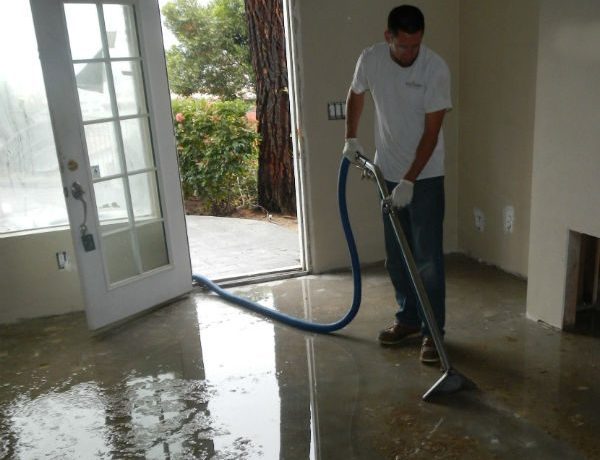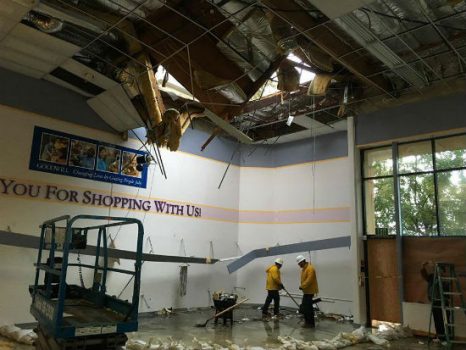Rejuvenating Your Space: The Ultimate Overview to Water Damages Restoration
Are you dealing with water damages in your space? From identifying the signs of water damages to repairing and avoiding future damage, we'll stroll you with each step.
Recognizing the Indicators of Water Damage
If you see stained walls or see a mildewy odor, it's likely an indicator of water damage. Water damages can happen in different kinds, and it is very important to be able to determine the signs beforehand to stop further deterioration. One usual indicator of water damage is the existence of stains or spots on your walls. These spots may show up darker or yellowish and can be triggered by water leaking through the wall surfaces. Furthermore, if you see paint peeling or bubbling, maybe an indicator of water damage below the surface. An additional obvious indicator is a moldy or wet smell in your house. This odor is usually triggered by mold and mildew or mildew development, which thrive in damp settings. If you discover this scent, it's essential to explore the source and attend to any kind of water damage without delay. Other indications to keep an eye out for include warped or sagging floorings, inflamed or stained walls, and the visibility of mold or mold on surface areas. By being watchful and acknowledging these indicators, you can take the necessary steps to attend to water damages and recover your space to its former magnificence.
Analyzing the Level of the Damages
Evaluating the extent of damages can help identify the necessary actions for reconstruction. When water damages occurs, it is very important to extensively examine the circumstance to understand the extent of the damage. Begin by inspecting the influenced areas, such as wall surfaces, ceilings, floorings, and furniture. Seek visible signs of water damages, such as discoloration, bending, or mold development. Utilize your hands to feel for any kind of dampness or soft qualities in the materials. It is also critical to check for surprise damages, such as behind wall surfaces or under flooring. This can be done making use of moisture meters or infrared electronic cameras to discover any wetness that may not be noticeable to the naked eye.
Once you have actually assessed the degree of the damages, you can determine the needed actions for restoration. If the damage is marginal and restricted to a little location, you might be able to deal with the repair procedure yourself. If the damage is comprehensive or includes architectural aspects, it is advised to look for specialist help. Restoration experts have the experience and equipment to effectively reduce the damage and restore your area to its pre-damaged condition.
Eliminating Standing Water and Drying Out the Area

When you have actually extracted as much water as feasible, it's time to focus on drying the room. Open home windows and doors to enhance air movement and ventilation. Usage followers and dehumidifiers to speed up the drying out procedure. mold removal La Mesa CA. Placement them tactically, directing the air flow in the direction of the damp areas. If the weather condition allows, consider utilizing all-natural sunshine to aid in drying.
Screen the moisture degrees and dampness web content frequently. Spend in a moisture meter to accurately assess the progression. Maintain in mind that drying a space may take a number of days or also weeks, relying on the extent of the water damage.
Fixing and Recovering Broken Structures and Materials
You can start repairing and recovering broken structures and products by analyzing the degree of the damage. As soon as you have a clear understanding of the damages, you can begin Discover More the remediation process.
Begin This Site by removing any kind of wet or broken products. This may entail tearing out wet drywall, removing water logged rug, or discarding destroyed furniture. Make certain to wear safety gear, such as handwear covers and a mask, to prevent contact with any kind of potentially harmful materials.
Next, extensively dry the room to avoid further damages and the growth of mold and mildew. Use followers, dehumidifiers, and open home windows to promote air movement and accelerate the drying out process. It is essential to attend to any remaining moisture to stop future problems.
After the area is completely dry, you can begin fixing and replacing broken materials. This might involve patching openings in the walls, redecorating timber floorings, or painting surface areas. If necessary, seek advice from with professionals to make sure proper repair work and metal roofing sheets reconstruction.
Avoiding Future Water Damages and Maintaining a Healthy Room
Once the space is totally dry, it is essential to take steps to stop future water damages and keep a healthy atmosphere. Begin by resolving any underlying problems that may have created the water damages to begin with. Look for leaking pipes, malfunctioning pipes, or inadequate water drainage systems. Repairing these issues will certainly help protect against future water damage and guarantee the durability of your area.
These actions will certainly aid avoid water buildup and possible damage to your property. Clear away any kind of debris that may obstruct the flow of water and create it to overflow.

Conclusion
Finally, you have actually now discovered the best guide to water damage reconstruction. By identifying the signs of water damages, analyzing the extent of the damage, eliminating standing water, and fixing and recovering damaged structures, you can invigorate your room. Remember to take preventative steps to prevent future water damages and keep a healthy and balanced living environment. With these steps, you can with confidence recover your room and ensure its longevity. So go on, take on that water damages and develop a gorgeous and risk-free area once more.